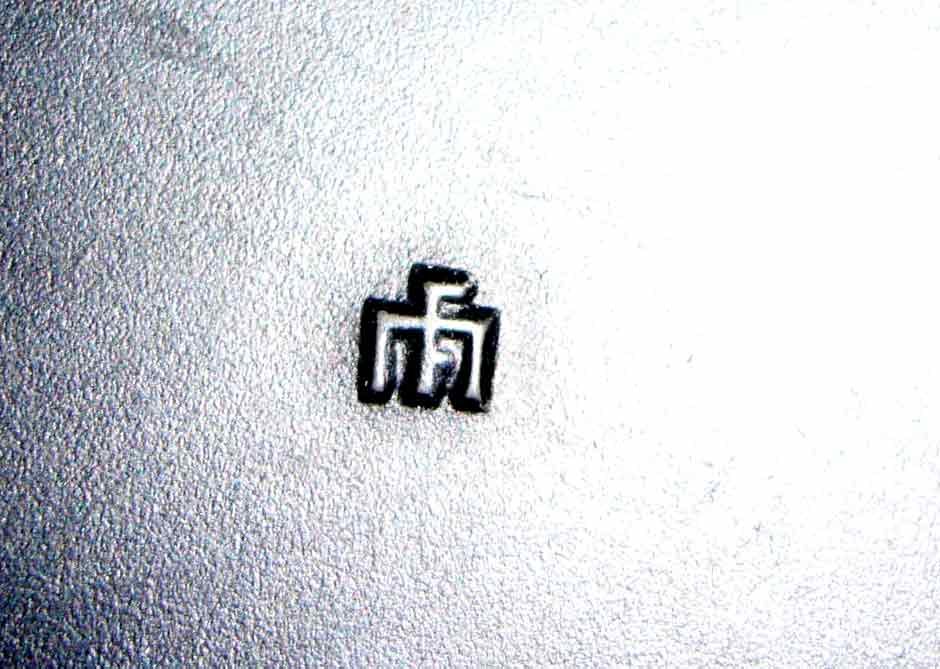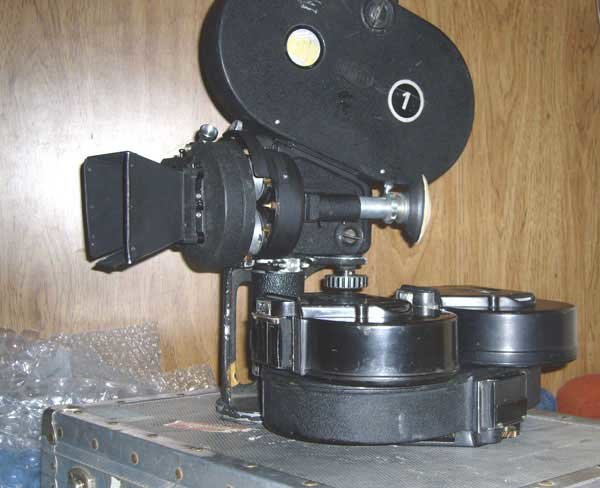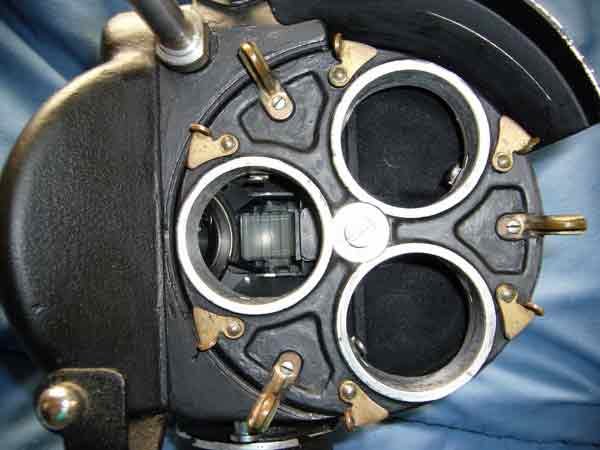-
Posts
43 -
Joined
-
Last visited
Everything posted by Frank Cook
-
You might be able to find a DP (Or AC) that owns a camera kit. Some of the indie guys own an Arri BL or low-budget type of 35mm kit. Most will make you a good deal on the use of the equipment if they are getting work as part of the deal. Contact people they have worked with in the past before flying everything to your location! You need to know what they are like on set in addition to seeing examples of their film work. You need more than "a nice guy with a camera." If they are working, it would be worth your time and money to watch them on set (arrive early, so you can see how long it takes for them to get everything ready. Are they hung-over? Do they look for solutions, or complain about problems.) Ask to see a reel shot with the EXACT camera gear they intend to use for your shoot. If you are shooting sound sync, do NOT try to use an Arri IIC, Konvas, or other loud camera. The post-production cost of cleaning-up the sound will destroy you budget. Lastly, remember, cameras bodies don't form the image on the film - lenses do. Good lenses are critical, and they cost more than a camera. This is one place you don't want to cut corners. If you have ANY question about the ability of the person or gear, shoot test footage. It's money well spent.
-
I far as I know, all Nikon lenses breath. One thing to remember is you will not get the same image quality with a motion picture camera as with a still camera. A Nikon camera produces a much larger image size on the negative than even full-frame super 35. Also, still cameras can use much higher shutter speeds. For example, if a movie camera with a 180 degree shutter is going to shoot with the shutter speed at 1000/sec (easy on almost any still camera) it would need to be shooting at 500 frames per second. In short, don't expect to get the same results on a cine camera with nikon lenses as one gets with a still camera. So, when ReadyTeddy says, "On the other hand, when I shoot production stills with my old Nikon F camera I am amazed at the results. Almost all my 20-30 year old prime lenses for the Nikon totally BLOW AWAY the cine lenses." He is not comparing apples to apples - unless he is masking the frame and shooting at slow shutter speeds. There is more to image quality than just good glass. I bet Zeiss Super Speeds would be much sharper if used on a Nikon camera than on an Arri IIC, but they might not cover the full frame. Well, with that said, I'm looking into getting a Nikon to PL mount teledapter. That way I can still use PL mount lenses. This option will allow me to my collection of great Nikon glass on my Arri IIC. Like many small-time film makers, I can't afford 10 - 15 Zeiss lenses. The cost of the teledapter (I think Les makes good ones) is about the same as converting to a nikon hardfront. It sure would be nice to be able to use lenses like my nikon 28mm shift lens. Has anyone tried using the teledapter?
-
Okay, I need to correct the information on this film. It is DuPont 928B, negative perforation, panchomatic, non-halation, superior 4. Sorry about the mis-information in the first post. The only thing I have found out is that the film is simular to Tri-X. The film has been stored on an office shelf for at least 10 years (Maybe 20 - 30 years).
-
I found some really old 35mm film. It's Panachrome. I have not been able to find much on this type of stock. Has anyone used it? I'm guessing it is B&W reversal film that was made in the mid-sixties. The can is in good shape, and I would like to develop a small piece of the film to see if it is useable (maybe 6"). Could I use D-76? Thanks for any advice. I would like to be able to use this film.
-
This camera sold today: June 12, 2007
-
It has been brought to my attention that the magazines could be newer than the camera, and the hi-hat is newer for sure as it is marked as "Made in West Germany." I was looking at the 400' mags very carefully today and found this symbol inside of both of them. Does anyone know what it means?
-
I have an Arriflex Model 1 in excellent condition that needs a collector to save it from being taken to the Alaska bush. I need a camera that has no electronics for use in extreme cold, and I thought I had bought an Arri 35 IIA. Wrong! This camera is a war model made sometime in the early forties before the Arri factory was bombed by the allied forces (serial number 157x). It is in great condition with matching ID numbers on all of the pieces - including the case, door, and variable speed motor. It has four magazines and the Arri hi-hat. All in a metal case (not an Arri case) A 50mm lens also came with the kit. I have been told not to use these accesseries (not even the lens) on any other model of camera because the Arri changed the camera slightly when they started making the Arri II, and the camera and/or the accessery could be damaged. I also have been told that the ASC clubhouse has a camera just like this one, but in poorer condition on display, serial number 142x (Since I'm in Alaska, I have not gone to see for myself, but have seen photos of that camera, they are posted in the forums on this site - which is how I am sure of the model of my camera and condition of that camera). The camera has been re-painted at least twice, and it has no Nazi markings. If the paint were removed there might be such marking engraved on the camera. I'm not sure, and I am not going to remove the paint. The name "Arriflex can be seen on the door, but only in bright light at just the right angle. The movement has very little signs of wear. The camera is usable, but this model does not have the super steady registration of a later model. I have not done a registration test. I need to sell this camera kit to help pay for getting camera that is more suitable for my intended use. I would also consider trades, but could not pay much extra.
-
Up-date: The camera I have turned out to be an Arri Model 1. No wonder I could not find information on the specs that match the camera! I have not done a registration test, but it runs nice and smooth with dummy film, and will pull a full mag. The camera has all matching ID codes inside, even the motor (127).
-
There's a cable on ebay that should be the one you are missing. item # 220110319810. It is marked "+" on the large pin. As always, use caution on ebay.
-
"Since the 2-perf frame is half the height of a 4-perf frame (as is the 16mm frame) you are fitting twice as much information (picture wise, not resolution wise) on a roll of film. The running times of a 35mm roll of film in 2-perf is the same as with 16mm. To cover 11 minutes of action in 16mm is about 400', the same is true with 2-perf. To cover 11 minutes in 4-perf 35mm you'd need about 1000'. Since you pay per foot for processing and dailies you are paying the same amount for 16mm as you would for 2-perf." I see a problem in your reasoning here. If you are using the same amount of footage with 35mm as with the 16mm, the cost is not the same - as you state. The cost is double. Per foot, 35 cost twice as much as 16mm. So, 35mm 2 perf would cost double S16. Right?
-
Ah ha!!! I have it. I was advise by Tobin that measuring is the only way to identify the shutter. Hmm. They reminded me the 180 degree shutter is half of the area of the shutter. So I looked at the camera and realized all I needed to do was compair the size of blades vs. the opneings. A 180 would have them both the same size. Mine has more mirror, so it is a 120 degree shutter. (There's too much difference to be a 165 degree shutter) Thank guys!
-
I have only the highest respect for a repairman that says he doesn't know (MUCH better than the guys that will lie and claim to be an expert). I think Jorge gave a good honest answer. Kudos to him. I was surprized that he has not worked on the Arri IIA, but I don't think he tried to mislead me, or give out bad information. Who knows, maybe I'll be able to sent the camera in to Cinematechnic for some upgrades, then Jorge will have his chance to look it over.
-
Nice footage. For a reel, you might want to edit down to 1:00 or better yet :30. If someone knows what they are doing, they won't need to see a longer reel to be able to tell that you are good. I think most people in the business can tell good work in short order, and don't usually have time to watch a long reel of something unrelated to their current project or projects. If you can't get them in a minute, you won't get them in three either. Think of it like a resume. A good resume is one page. Long resumes often don't even get a second look.
-
I went to cinematechnic.com (not my first time) to contact Jorge. To my surprize, he said he has not seen the Arri IIA. He also thought it would be either a 180 or 165 degree shutter. He has not heard of a 120 degree shutter. Probably didn't think of an older shutter from a 35II being a possibility -I'm sure he's a busy guy. The camera looks to be built from other cameras. I ran some dummy film through it and it seems to work great. That's what I bought it for is having a camera that works (it has ugly paint). The two halves of the body look like they came from different cameras. There is a difference in the way they are painted. I think the camera was assembled then painted, but it easy to tell the two sides are different. The door I would guess came from still a different camera. All this leaves still leaves me with the question: Which shutter does it have?
-
I never thought I would stir up this much disscusion of which camera has what mirror! Somehow I thought there would be a way to just look at the mirror and know what I have. Ha! Anyway, I guess I can always use measurements and math. Maybe I'll just shoot a little footage exposed for the 180 mirror and see if it comes out too dark. Boy, it seems like there should be some way to look at the mirror and determine the shutter degrees.
-
Now were're getting somewhere. Christian, since you have an Arri IIA with the 180 shutter, could you measure the shutter opening (at widest point)? The opening is a different width for 120 than it is for 180 so if I have a measurement on a shutter that is a known opening, I can then measure mine and know what I have for sure. I'm getting great information here on early Arriflex models, but since the shutter opening controls exposer, it would be very expensive to ruin film guessing the shutter size wrong. I suspect this camera has been modified over the years, so I just want a way to verify things.
-
I'm pretty sure this is a IIA because the serial number starts with Nr. I found a camera that is known to be a IIa that also has that prefix. Thanks for the info on the wings, this camera has them for each lens. I am in question about the shutter angle because Visual Products says on their site that the Arri 35 IIA has a 120 degree shutter. I person I bought the camera from thought this camera has a 180 shutter, but wasn't sure. The mirror in this camera is a "butterfly" shape with four mirror faces. I should be able to measure the mirror and determine the angle, but I need the specs. I have had NO luck finding this information on the web. If someone has an Arri with the 180 degree shutter they could measure the widest part of the mirror and post it. Because these cameras are upgraded and modified over the years, I don't want to assume anything.
-
I just bought an Arri 35 IIA and need to identify the shutter angle. It should be 120 degree, but it could have been upgraded at some point to 180 degree. How do I tell the difference?







